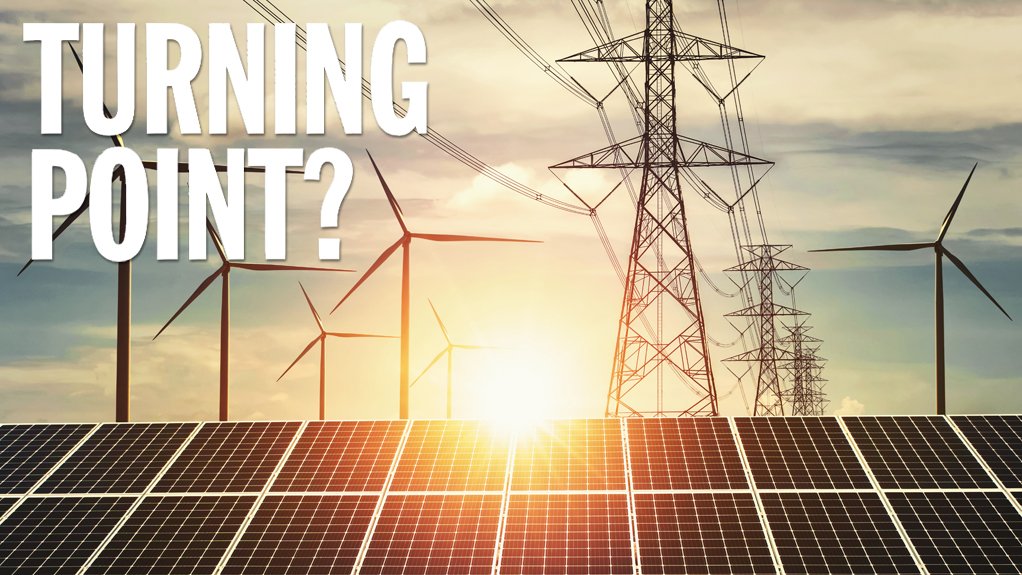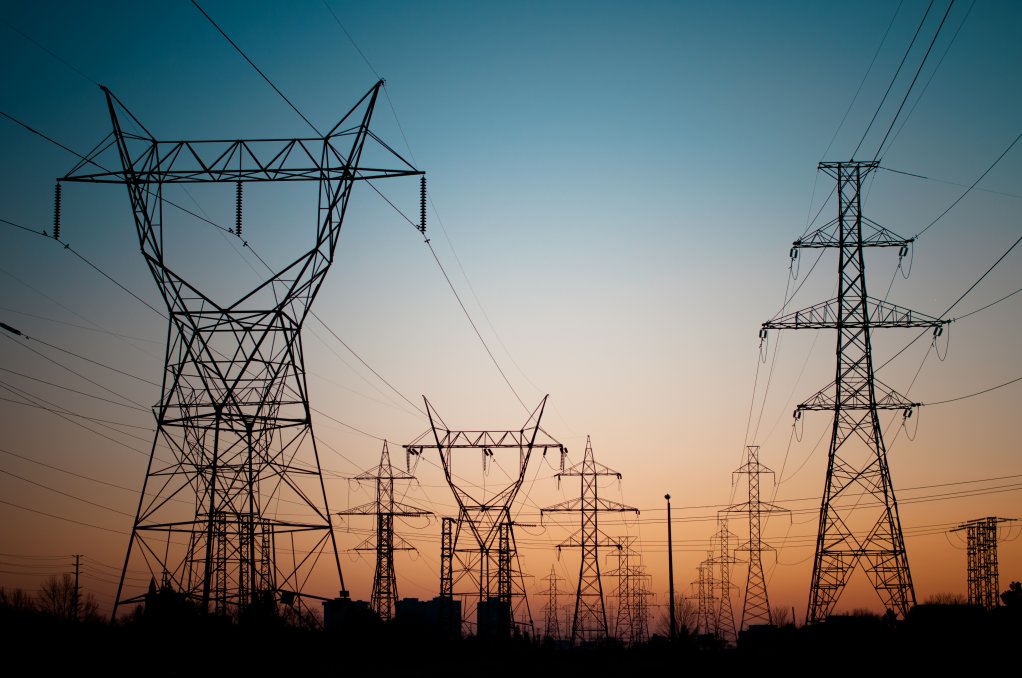Collaboration and grid investment key to making 2024 a turning point in SA’s power crisis




Independent Power Producer Office head Bernard Magoro
GRIDLOCK the grid as one of the biggest challenges facing the country’s electricity sector, both from a capacity and an allocation-process standpoint
Photo by Adobe Stock
If South Africa’s energy investment programmes and reforms continue, the energy availability factor (EAF) for State-owned utility Eskom’s coal fleet does not decline, and business partnerships and collaboration endure, it is possible to, from a societal perspective, effectively end loadshedding by the end of this year.
This is the assessment of Energy Council CEO James Mackay, who participated in a recent webinar hosted by Creamer Media on the ‘Energy Outlook for 2024’.
The elimination of loadshedding would position the country to build up the requisite skills and innovation ability, and to scale up on delivering electricity sustainability from 2025 onwards.
Mackay argued that there was potentially sufficient new generation and storage coming online in the upcoming period, including from utility and rooftop solar photovoltaic (PV), public and private wind generation, battery storage and gas, to begin closing the current generation shortfall. Reducing and eventually eliminating loadshedding this year, however, would require a stabilisation in the coal fleet’s EAF, which has been on a declining trajectory for several years.
He said that while there had, historically, been a downward trend in the EAF of roughly 3% year-on-year, there had been a levelling off since September.
Consequently, if the positive gains were to continue for the remainder of this year, the focus could finally shift in 2025 from loadshedding to recovering the reserve margin, improving overall reliability, and restoring a measure of energy security back into the system.
Mackay did, however, caution that there were risks to this outlook and stressed that considerable work needed to be undertaken for it to be realised, including sustaining the collaboration that had developed in 2023 between government and business in tackling the myriad challenges.
Grid Issues
Independent Power Producer Office head Bernard Magoro identified the grid as one of the biggest challenges facing the country’s electricity sector, both from a capacity and an allocation-process standpoint.
He explained that in terms of the latter, the entrenched system had worked very well; however, with the reform that occurred in 2021, the model had to be adjusted to accommodate the markets that began developing in parallel.
In 2021, a reform was made to Schedule 2 of the Electricity Regulation Act, increasing the licence-exemption cap from 1 MW to 100 MW. That cap was subsequently removed entirely to accelerate investment as power disruptions intensified.
However, Magoro averred that Eskom now had a clearer direction on how it would manage grid allocations in future, and had also signalled that it would seek to used mechanisms such as curtailment to unlock capacity in the Eastern, Northern and Western Cape provinces, where there was currently deemed to be no additional grid capacity available.
He was speaking before Eskom published an addendum to its latest Generation Connection Capacity Assessment, or GCCA 2025, which outlined the new curtailment framework. Published on Eskom’s website and approved by the National Energy Regulator of South Africa (Nersa), the addendum states that, by accepting a “reasonable share of no more than 10% of curtailment”, 3 470 MW of additional grid capacity to connect wind generation will be made available, including 2 680 MW in the Western Cape and 790 MW in the Eastern Cape. The publication of the addendum could have major implications for the renewables bid window currently under way. However, at the time of publication, it had not yet been confirmed whether the new curtailment framework would be applied during the round, with another bidding round due for release by the end of March. If it isn’t, Magoro noted during the webinar that “gigawatts of projects in the Cape region” cannot currently be realised, owing to a lack of transmission capacity.
Although Magoro argued developers needed to start moving into areas that are not grid constrained to develop projects, he did caution that projects bid during the current seventh renewables procurement bid window could carry a price premium, with experience from previous bid windows showing up to a 30% difference in the tariffs between the Cape region and areas such as Mpumalanga.
Through Bid Window 7, which was launched on December 14, government is aiming to procure 3 200 MW of onshore wind and 1 800 MW of solar PV capacity; the submission deadline is set for April 2024.
As reported by Engineering News & Mining Weekly last month, this is the first bidding round to be hosted following the partial failure of Bid Window Six. During this window, only solar PV projects with a combined capacity of 1 000 MW advanced to a preferred-bidder stage after Eskom indicated there to be no remaining grid-connection capacity for those wind projects that had been vying for a 3 200 MW allocation.
Eskom subsequently published a new Generation Connection Capacity Assessment, indicating that there was 19.9 GW of capacity available nationally, but zero remaining capacity in the Eastern, Northern and Western Cape provinces, where the majority of shovel-ready wind and solar projects are located.
Ahead of the publication of the curtailment addendum, Magoro emphasised that this meant that there would need to be a focus on developing projects where grid capacity was definitely available.
Nordex Energy South Africa MD Compton Saunders, who is also a South African Wind Energy Association board member, said that this issue is also impacting on the wind energy industry, as there are several projects in the Cape region that are close to shovel- ready status that are unable to reach financial close, owing to the inability to evacuate from the grid.
He pointed out that while the country has significant grid capacity in other areas, like Mpumalanga and KwaZulu-Natal, entering these new areas is challenging for developers as they are often not as highly developed areas, or have bigger environmental challenges. Consequently, it could take several years before projects in these areas actually reach maturity and can deliver power to the grid.
From a technology perspective, Saunders added that technology already exists in the market to manage lower-wind-resource areas; therefore, in terms of wind turbine technology, there is no real limitation or constraint – it is, rather, a matter of timing.
Positive Strides
Minister of Electricity Kgosientsho Ramokgopa in January announced that he would be setting up an independent transmission project office, located either at the Development Bank of Southern Africa or the Industrial Development Corporation, to procure new transmission capacity using the build, operate and transfer model.
Magora said that this was “a step in the right direction” to create more capacity to connect more renewables and other generation projects to the grid.
He also cautioned, however, that stakeholders remained concerned about securing their authorisations and licences in time and argued that it was important for the Energy One Stop Shop, which had been created at the Department of Trade, Industry and Competition (dtic), to play its intended role in expediting these processes.
Mackay expressed optimism in the differentiated approach that had emerged from government and business over the past year to tackle the crisis under the aegis of the National Energy Crisis Committee (Necom), which was set up by President Cyril Ramaphosa to end loadshedding.
He pointed out that challenges, including grid-related issues, were being addressed by Necom and highlighted the hands-on role of Ramaphosa himself. Necom was meeting with business every six weeks to ensure progress.
MDA Attorneys director Vaughan Hattingh echoed these sentiments, noting that the commitment to engage is “a fundamentally important shift”.
However, he emphasised that this must include engagements with contractors and generators, especially for them to tie into the grid.
The shift towards ‘first ready, first served’ approach should help debottleneck the grid-access process, but there should be more focus on improving the current “adversarial” contracting process, which is not conducive to the partnerships that are required to ensure expeditated project delivery, and which is an area that needs to be addressed generally.
Other Areas of Focus
From a localisation perspective, Actom group business development executive Mamiki Matlawa averred that work must continue on the local designation of specific equipment, as actioned by the dtic.
Continuing this work is important, as it forced manufacturers, including Actom, to localise what they are building and bolster the local value chain.
Matlawa added that, in areas where the country does not have capacity, and the market opens up to international firms, there should be a focus on partnering locally and transferring technology so that industrialisation materialises.
Further, an area that has “gone under the radar” is bringing in skills from community trusts that are part of the Integrated Resource Plan requirements.
Actom is investing about R50-million in an artisan training centre in relation to the sustainability of the manufacturing sector.
Saunders, meanwhile, said that recent experience has showcased that as projects reach financial close and construction begins, there are significant challenges in finding people in the country who can participate in the various stages of closing and constructing projects.
He warned about the availability of construction professionals, especially finding those with the requisite experience and qualifications in the country.
Saunders said that the long hiatus between bid windows meant that considerable talent was lost to the international market, while the stop-start nature of the industry has also posed challenges.
With gigawatts of projects coming to fruition in the near future, it will, therefore, be tough for the country to manage this execution with a skills deficit, in addition to issues such as the congestion of materials at ports.
However, Saunders is still bullish about the outlook as there is positive procurement occurring, and the challenges are not insurmountable.
He called for visibility on the pipeline of projects, as well as better engagement across departments, to mitigate this.
Comments
Press Office
Announcements
What's On
Subscribe to improve your user experience...
Option 1 (equivalent of R125 a month):
Receive a weekly copy of Creamer Media's Engineering News & Mining Weekly magazine
(print copy for those in South Africa and e-magazine for those outside of South Africa)
Receive daily email newsletters
Access to full search results
Access archive of magazine back copies
Access to Projects in Progress
Access to ONE Research Report of your choice in PDF format
Option 2 (equivalent of R375 a month):
All benefits from Option 1
PLUS
Access to Creamer Media's Research Channel Africa for ALL Research Reports, in PDF format, on various industrial and mining sectors
including Electricity; Water; Energy Transition; Hydrogen; Roads, Rail and Ports; Coal; Gold; Platinum; Battery Metals; etc.
Already a subscriber?
Forgotten your password?
Receive weekly copy of Creamer Media's Engineering News & Mining Weekly magazine (print copy for those in South Africa and e-magazine for those outside of South Africa)
➕
Recieve daily email newsletters
➕
Access to full search results
➕
Access archive of magazine back copies
➕
Access to Projects in Progress
➕
Access to ONE Research Report of your choice in PDF format
RESEARCH CHANNEL AFRICA
R4500 (equivalent of R375 a month)
SUBSCRIBEAll benefits from Option 1
➕
Access to Creamer Media's Research Channel Africa for ALL Research Reports on various industrial and mining sectors, in PDF format, including on:
Electricity
➕
Water
➕
Energy Transition
➕
Hydrogen
➕
Roads, Rail and Ports
➕
Coal
➕
Gold
➕
Platinum
➕
Battery Metals
➕
etc.
Receive all benefits from Option 1 or Option 2 delivered to numerous people at your company
➕
Multiple User names and Passwords for simultaneous log-ins
➕
Intranet integration access to all in your organisation





















